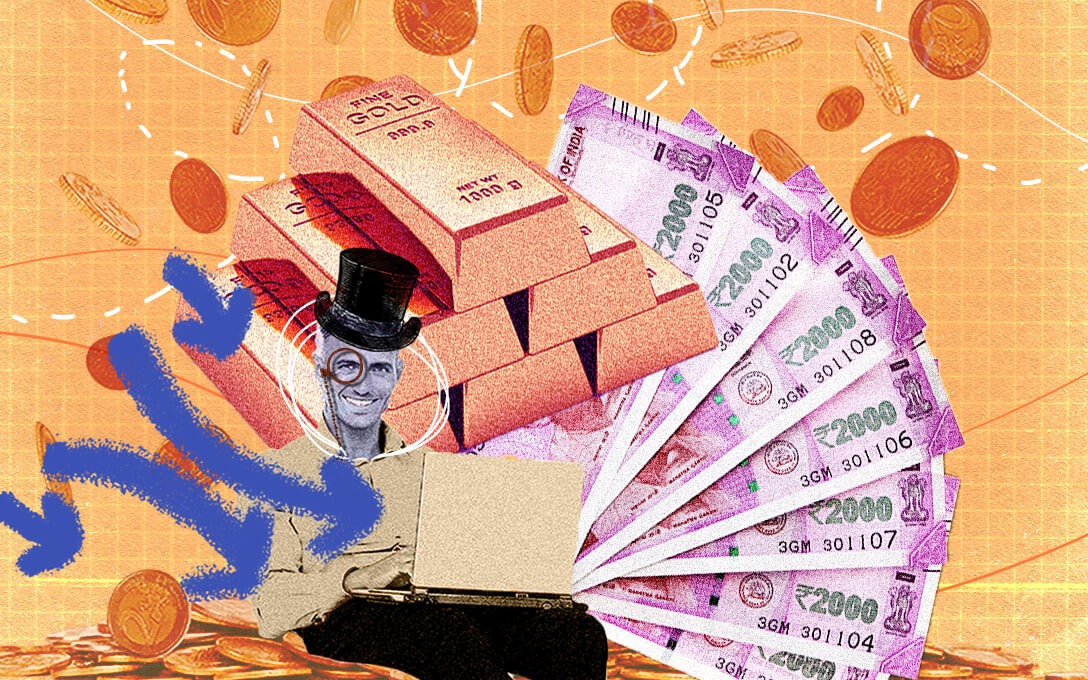Understanding India’s infrastructure sector
India’s thriving economy is fueled by a diverse range of sectors, and one crucial sector driving continuous growth is the infrastructure sector. In recent years, the Indian government has taken significant steps to speed up infrastructure development. Following the COVID-19 pandemic, the government has increased the infrastructure budget by 75%. Additionally, in just a decade, from 2013 to 2023, the percentage of the total budget allocated to infrastructure has surged from 13% to an impressive 22%. This signifies a clear shift in priorities, as the government directs more resources towards creating a solid foundation for future growth.
But why is infrastructure spending so crucial? It’s because every rupee spent in this sector has a transformative effect on the economy, with a multiplier effect ranging from 1.2 to 1.5 times on the GDP i.e. for every rupee spent on infrastructure, the economy grows by an additional 1.2 to 1.5 rupees.
For example, if a new highway is built, it not only creates jobs during construction but also lowers logistics costs and boosts tourism opportunities and retail businesses. The resulting economic activity from these new businesses further propels the economy, leading to a higher GDP.
Growth drivers of the sector
- Government initiatives – The Indian government has been actively promoting infrastructure development through various initiatives such as the PM Gati Shakti (multi-modal logistics development), Bharatmala Project (road development), Sagarmala Project (port-led development), Smart Cities Mission, AMRUT (urban infrastructure), and Pradhan Mantri Awas Yojana (housing for all). These initiatives provide a strong impetus for infrastructure growth.
- Private sector investment – Infrastructure projects are expensive and often have a long gestation period. It can take years for a project to be completed and start generating returns, which discourages the private sector from entering the sector. To address this, the government is creating a favourable operative environment. For instance, the government may plan to introduce a credit guarantee facility that would improve the credit perception of public-private partnership projects and enable access to long-term loans. InvITs (Infrastructure Investment Trust) also help private players finance large infrastructure projects by raising funds from both retail and institutional investors without taking on debt. InvITs also get tax benefits that are not available to companies.
- Foreign direct investment – India’s FDI policy allows 100% FDI in various sectors, including residential and commercial properties, highways, hospitality, education, and industrial parks. To further facilitate FDI, the government is considering permitting limited liability partnerships (LLPs) to finance townships, hotels, hospitals, and highways. This move could attract more foreign investors by reducing lock-in periods and improving investor facilitation.
Components of infrastructural development
Roads
India’s extensive road network, the second-largest in the world at 6.3 mn kms, is vital for commuting and transporting goods. Roads handle 64.5% of goods and 90% of passenger movement. That’s why road projects get a significant share of the total infrastructure budget. The flagship Bharatmala Pariyojana aims to build or upgrade 34,800 kms of roads including rural roads, national highways, including expressways and bypasses. Since the launch of the project, the construction of highways has accelerated, from 12 km/day in 2014 to 29 km/day in 2021-22, with a target of reaching 60 km/day.
Railways
The Indian Railways, with over 68,031 route kms, is the fourth largest network in the world. Indian Railways are a key carrier of passenger traffic as well as freight in India. It has also remained one of the largest employers in the world. Currently, the government is emphasising on electrification of railways, launching high-speed trains, remodelling stations, and launching new stations along with laying tracks at record speed. The government plans to increase the construction of rail lines from 12 to 16 km per day.
Airports
The presence of well-connected airports enhances the attractiveness of regions for businesses, investors, and tourists, driving economic growth and job creation. Hence, India is focused on improving regional air connectivity in smaller towns and cities along with the expansion of existing airports. UDAN (Ude Desh Ka Aam Naagrik) is one such government initiative designed to provide financial assistance to airlines to operate flights in smaller cities.
Ports
Ports are crucial for India’s infrastructure as they serve as gateways for international trade, enabling the import and export of goods. Efficient port infrastructure ensures seamless movement of goods, reducing logistics costs and enhancing competitiveness. The government has launched the Sagarmala Project to fund projects focusing on modernising existing ports, developing new ones, and improving the overall connectivity of India’s waterways.
The investments in infrastructure, be it roads, railways, airports, or cities, signify the nation’s determination to create a bigger and stronger economy. Each brick laid, every road constructed, and every bridge built represents a stepping stone towards progress.
Keeping in mind the significance of infrastructure as a sector which will always remain the backbone of any economy, we created the Infra Tracker to help you get exposure to companies which are directly contributing towards India’s infrastructure development.
Disclaimer: Investment in securities market are subject to market risks. Read all the related documents carefully before investing. Registration granted by SEBI, membership of BASL (in case of IAs) and certification from NISM in no way guarantee performance of the intermediary or provide any assurance of returns to investors. The content in this article is for informational and educational purposes only and should not be construed as professional financial advice nor to be construed as an offer to buy /sell or the solicitation of an offer to buy/sell any security or financial products. Users must make their own investment decisions based on their specific investment objective and financial position and use such independent advisors as they believe necessary. Disclosures: bit.ly/sc-wc





